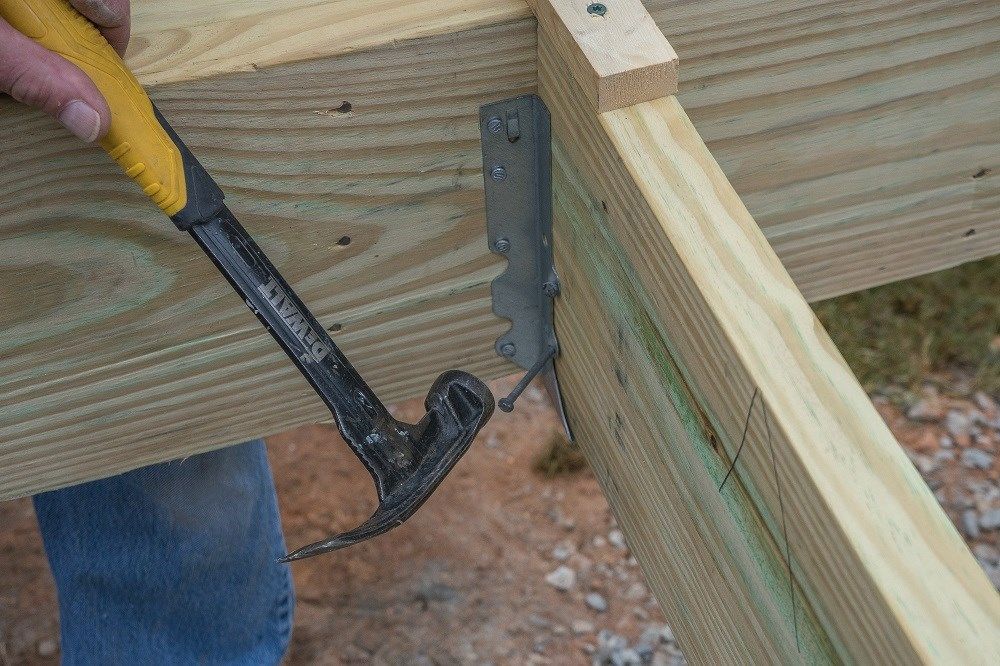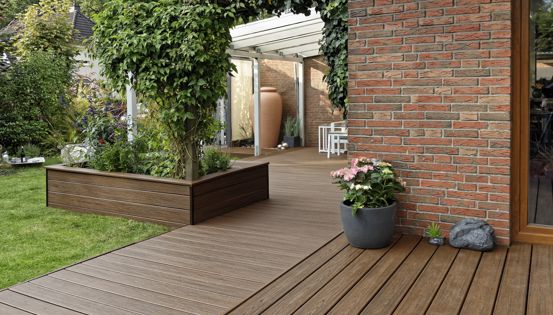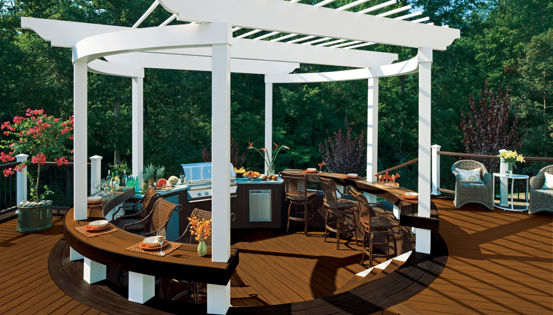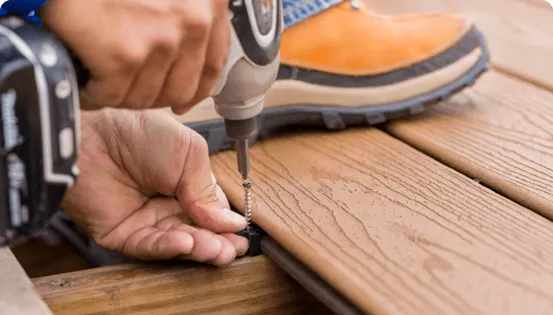Joist hangers can be used anywhere you need to strengthen a load bearing connection. Joist hangers use face mount attachments to fasten joists to ledger boards and beams. You can buy joist hangers for different sized lumber. Single, double, triple, right and left orientation hangers are available for various applications.
Many builders underestimate the extreme importance of selecting and properly installing the appropriate joist hangers. Make sure to fill all of the required nail holes with the appropriate nail type. Remember that your deck will be only as strong as its weakest connection. Always follow the manufacturer’s instructions and never try to cut corners when considering hardware and fasteners for your deck project.
Joist Hanger Vertical Capacity
| Joist Size | Min Capacity lbs |
|---|---|
| 2x6 | 400 |
| 2x8 | 500 |
| 2x10 | 600 |
| 2x12 | 700 |
Never Modify The Product 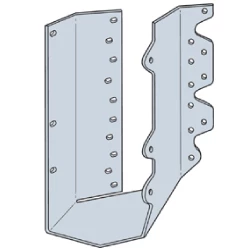
Improvising by bending, cutting or adjusting hangers in any way not only can be dangerous, but also voids all of the manufacturer’s guarantees on the hanger’s performance. Straight hangers are designed to hold a joist at a 90-degree angle; angled hangers are usually designed for 45-degree angles. There is hardware for almost any kind of application you can imagine in construction. There is most likely the perfect connector available - it is up to you to find it. If there isn’t a connector available, you might need to reconsider your approach to the connection.
Sizing Joist Hangers
Always make sure you are using the largest hanger size for a particular joist. Joist hangers are designed and engineered for specific applications. Each situation offers its own unique set of stresses and load-carrying capacities. If ever you stray from the conventional use for a joist hanger, you are asking it to do something it wasn’t meant to do and, in turn, its performance will suffer. 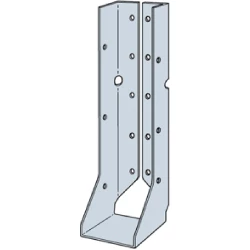
Concealed Joist Hangers
Concealed joist hangers can be used in areas where it is difficult or impossible to attach the side flanges of a standard joist hanger. This hanger is especially useful in attaching rim joists at the edges of the ledger board. The concealed joist hanger can be nailed into place on the edge of the ledger board without the need to nail into the end grain of the lumber, which is prohibited by code. Concealed hangers can be attached to the sides of support posts to attach the exposed stair stringers and provide a strong and attractive connection.
45-Degree Angled Joist Hangers 
Angled decks may require using right- and left-skewed joist hangers. These hangers are bent to 45 degrees and can be installed with joist hanger nails using the same method as straight joist hangers. Angled joist hangers should be available at your local lumberyard for 2x6 and 2x10. Double right- and left-skewed joist hangers are also available for angled beams, but they are relatively expensive. Make sure that all of your deck hardware and fasteners are triple zinc galvanized or stainless steel so they are compatible with ACQ lumber. Never cut, bend or modify deck hardware for alternative uses.
